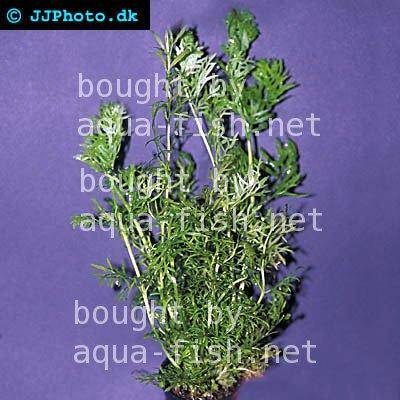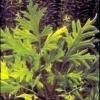Ceratopteris thalictroides
Scientific name: Ceratopteris thalictroides
Family: Parkeriaceae
Maximum size reached under cultivation: 20 - 40 cm (7.87 - 15.75 inch)
014
Recommended pH range: 5 - 6.5
Recommended water hardness: 4 - 8°dGH (71.43 - 142.86ppm)
0°C 32°F30°C 86°F
Recommended temperature range: 20 - 25 °C (68 - 77°F)
Preferred propagation method: Lateral shoots
Native to: South Asia
Growth rate: Normal
Recommended substrate: Fine gravel
Lighting requirements: Bright
Ideal placement in tank: Midground
🌱 Common Names
Water Sprite, Indian Fern, Water Fern
🌍 Origin
Ceratopteris thalictroides is native to South and Southeast Asia. It naturally grows in tropical and subtropical wetlands, including marshes, rice paddies, and slow-moving waters.
🏞️ Ideal Planting Area
Ceratopteris thalictroides is ideally suited for the midground of the aquarium. It typically reaches a height of 20–40 cm (7.87–15.75 inches), making it an excellent choice for medium to large tanks. Its finely divided foliage adds unique texture and provides natural shelter for fish and invertebrates. It can be rooted in the substrate or left floating, depending on the desired aquascape style. Ensure it has enough space to prevent overshadowing light-demanding plants.
🌱 Propagation Methods
Ceratopteris thalictroides propagates via spores and by producing adventitious plantlets on older leaves. In aquariums, simply allow the small plantlets to form and develop roots; once ready, they can be gently detached and replanted elsewhere. Under good conditions, Water Sprite multiplies quickly and establishes new colonies without difficulty.
💧 Water Parameters
- pH: 5.0–6.5
- Water hardness: 4–8 °dGH (71.43–142.86 ppm)
- Temperature: 20–25 °C (68–77 °F)
⚙️ Difficulty Level
Medium. Bright lighting is essential for healthy, compact growth. In low-light environments, plants may become leggy and sparse. This species prefers soft, acidic water. While CO2 supplementation is not required, it greatly enhances growth and leaf density.
📈 Growth Rate
Moderate to fast when provided with strong lighting and proper fertilization. Growth slows significantly in low-light conditions.
💡 Lighting Requirements
Bright lighting is preferred to maintain lush, compact foliage. Under low light, leaves become elongated and sparse, reducing the plant’s overall decorative impact.
📝 Short Description
Ceratopteris thalictroides is a versatile and attractive aquatic fern commonly known as Water Sprite, Indian Fern, or Water Fern. It naturally inhabits tropical wetlands and easily adapts to full submersion in aquariums. Its finely divided, feathery leaves create a lush green background and offer excellent shelter for fish and shrimp.
With a moderate to fast growth rate, it quickly fills gaps in the aquascape and provides a more natural environment for aquatic life. It thrives best in soft, slightly acidic water and under bright lighting. Regular pruning helps maintain its shape and prevents overcrowding. Interestingly, in some cultures, the leaves are also used as a vegetable in salads and cooked dishes, highlighting its versatility beyond the aquarium.

 Ceratopteris cornuta
Ceratopteris cornuta